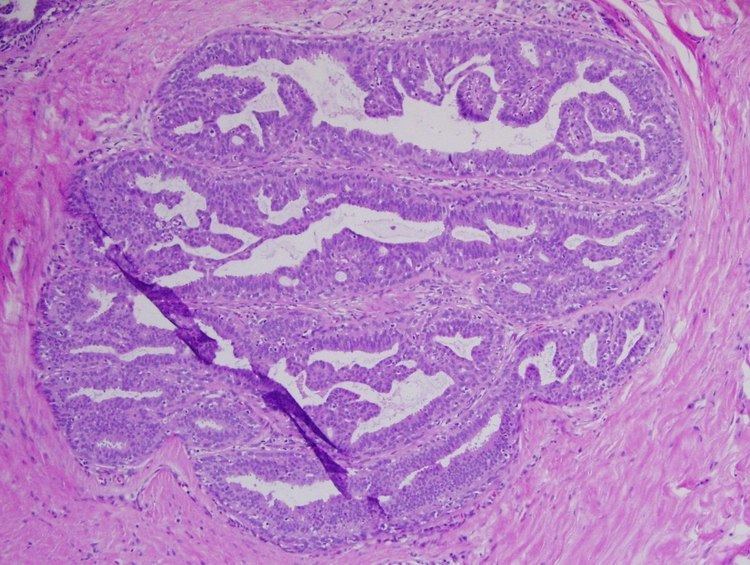ICD-O 8050/0 | MeSH D010212 | |
 | ||
A papilloma (plural papillomas or papillomata) (papillo- + -oma) is a benign epithelial tumor growing exophytically (outwardly projecting) in nipple-like and often finger-like fronds. In this context papilla refers to the projection created by the tumor, not a tumor on an already existing papilla (such as the nipple).
Contents
When used without context, it frequently refers to infections (squamous cell papilloma) caused by human papillomavirus (HPV), such as warts. Human papillomavirus infection is a major cause of cervical cancer, although most HPV infections do not cause cancer. There are, however, a number of other conditions that cause papilloma, as well as many cases in which there is no known cause.
Signs and symptoms
A benign papillomatous tumor derived from epithelium. Cauliflower-like projections that arise from the mucosal surface. It may appear white or normal colored. It may be pedunculated or sessile. The average size is between 1–5 cm. No strong sex preference. The most common site was the palate-uvula area followed by tongue and lips. The durations ranged from weeks to 10 years.
Cause
Immunoperoxidase stains have identified antigens of the human papillomavirus (HPV) types 6 and 11 in approximately 50% of cases of squamous cell papilloma.
Prognosis
There is no evidence that papillomas are premalignant.
Differential diagnosis
Note: differentiation is done accurately by microscopic examination only.
Treatment
Conservative surgical excision, recurrence is rare.
